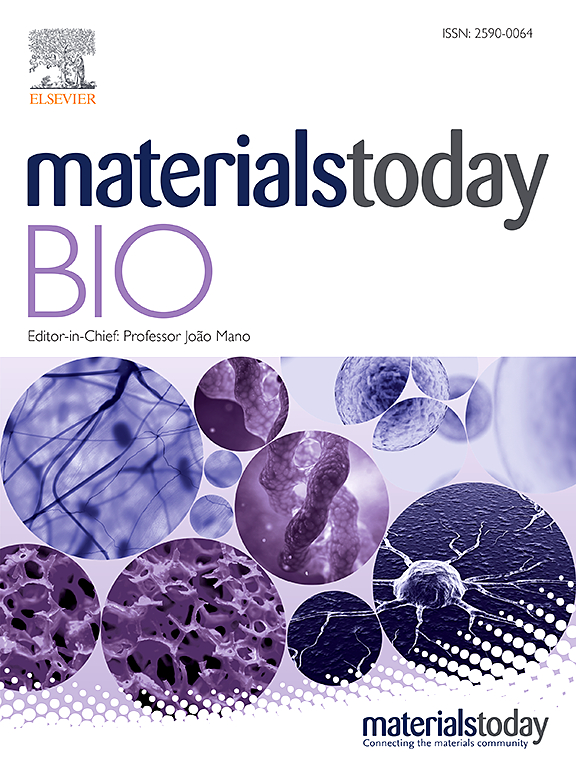A novel therapeutic approach to hemangiomas: Combining photothermal therapy and ferroptosis in a microneedle delivery system
IF 8.7
1区 医学
Q1 ENGINEERING, BIOMEDICAL
引用次数: 0
Abstract
Infantile Hemangioma (IH) is the most common benign vascular tumor occurred in infants and young children. The larger hemangiomas or lesions located in specific areas can cause severe complications, such as disfigurement, obstruction, or ulceration, increasing the risk of functional impairment. Propranolol, serving as the first‐line drug for IH treatment, still poses various challenges. Certain patients exhibit low sensitivity to propranolol therapy or face recurrence, which become the leading reason for the failure of IH treatment. Additionally, the requirement for frequent daily medication can also complicate adherence for patients. Hence, developing novel IH therapy methods or drug administration routes is significantly important to enhance therapeutic effect and reduce side effects. Accordingly, in this study, we introduced an innovative photothermal, dissolving microneedles (MNs) patch designed specifically for IH therapy. Firstly, a pH responsive self-assembly nanoplatform with photothermal effect is designed by encapsulating propranolol (PRN) into zeolitic imidazolate framework-8 (ZIF-8) NPs and modifying with TA/Fe nanocomplexes. The fabricated PRN@ZIF-8@TA/Fe (PZ@TA/Fe) NPs exhibited good biocompatibility, pH-responsive degradation, photothermal conversion efficiency inside hemangioma endothelial cells (HemECs). Importantly, TA/Fe surface modification led to intracellular iron overload, which subsequently induced the Fenton reaction and triggered ferroptosis process. The combination of photothermal therapy and ferroptosis therapy exhibited a superior synergistic effect in damaging HemECs and vascular structures. The PZ@TA/Fe NPs loaded in MNs patch further ensured targeted delivery to lesion areas and achieved precise and maximal release of the PZ@TA/Fe NPs, while reducing systemic side effects to normal vasculature or tissue. The PZ@TA/Fe@MNs showed remarkable anti-angiogenic effect against IH in mice model. This study first investigates the potential of ferroptosis therapy in IH treatment, and highlights the substantial therapeutic effect of combining photothermal therapy and ferroptosis effects against IH proliferation. This approach can also become a more effective and safer treatment method for other diseases characterized by abnormal angiogenesis.

求助全文
约1分钟内获得全文
求助全文
来源期刊

Materials Today Bio
Multiple-
CiteScore
8.30
自引率
4.90%
发文量
303
审稿时长
30 days
期刊介绍:
Materials Today Bio is a multidisciplinary journal that specializes in the intersection between biology and materials science, chemistry, physics, engineering, and medicine. It covers various aspects such as the design and assembly of new structures, their interaction with biological systems, functionalization, bioimaging, therapies, and diagnostics in healthcare. The journal aims to showcase the most significant advancements and discoveries in this field. As part of the Materials Today family, Materials Today Bio provides rigorous peer review, quick decision-making, and high visibility for authors. It is indexed in Scopus, PubMed Central, Emerging Sources, Citation Index (ESCI), and Directory of Open Access Journals (DOAJ).
 求助内容:
求助内容: 应助结果提醒方式:
应助结果提醒方式:


